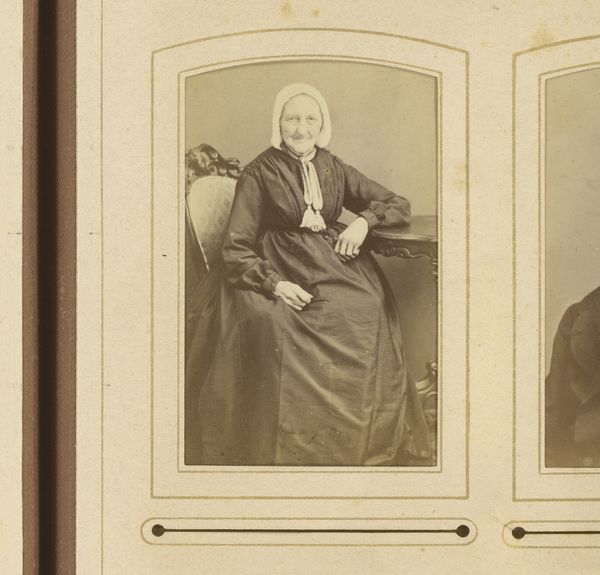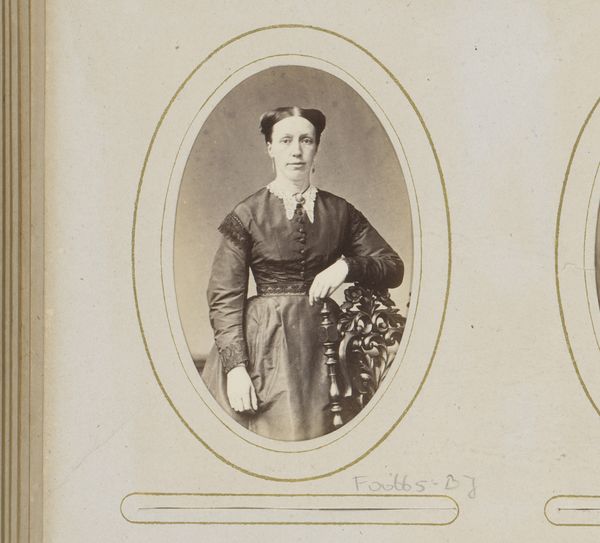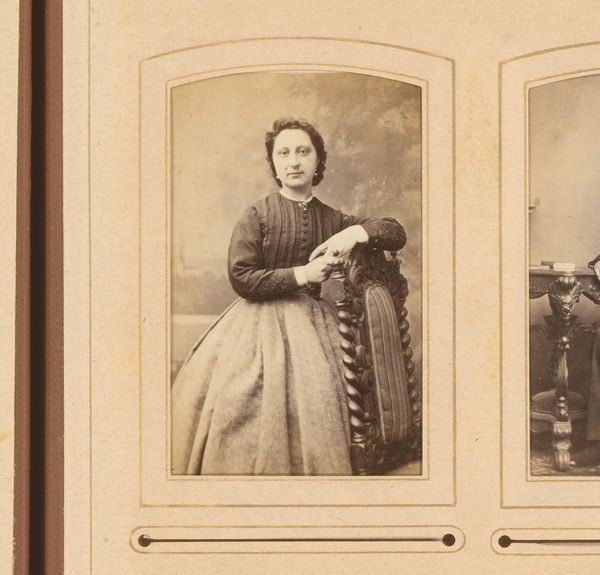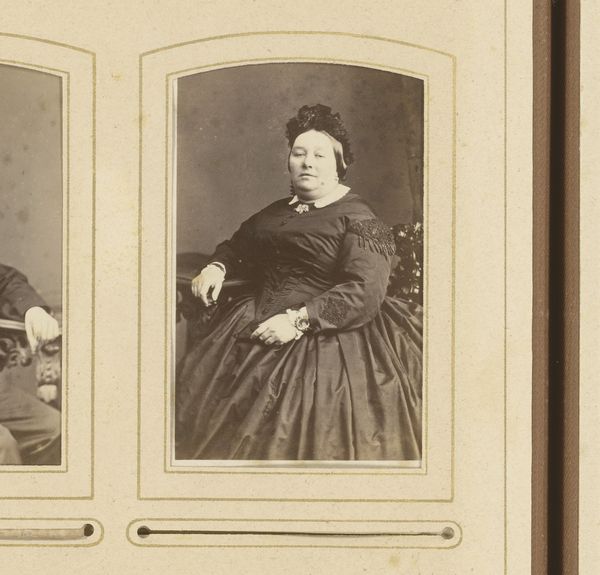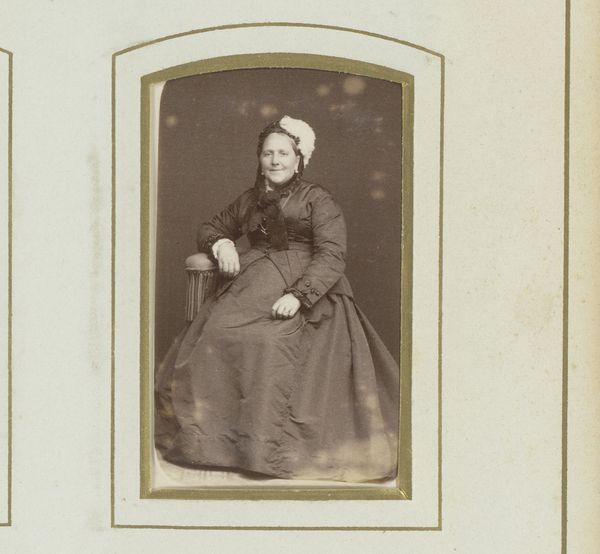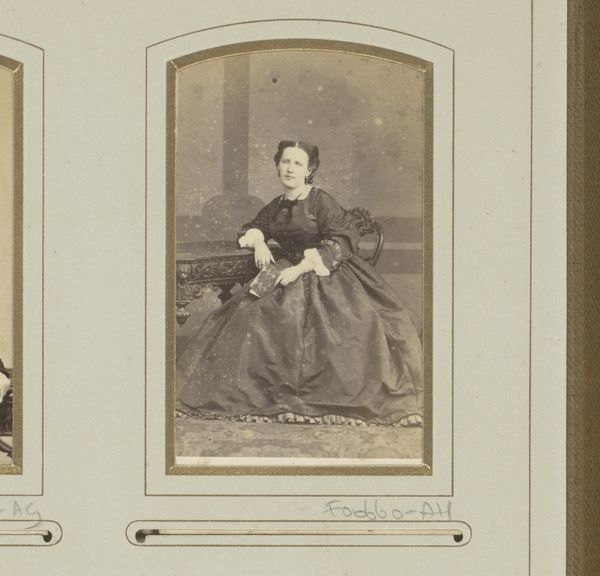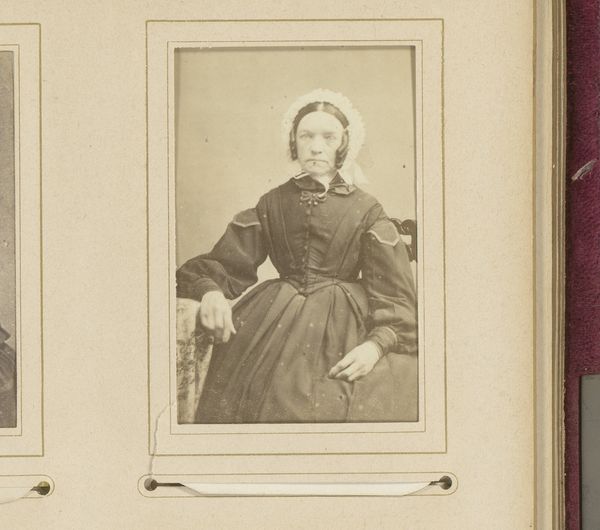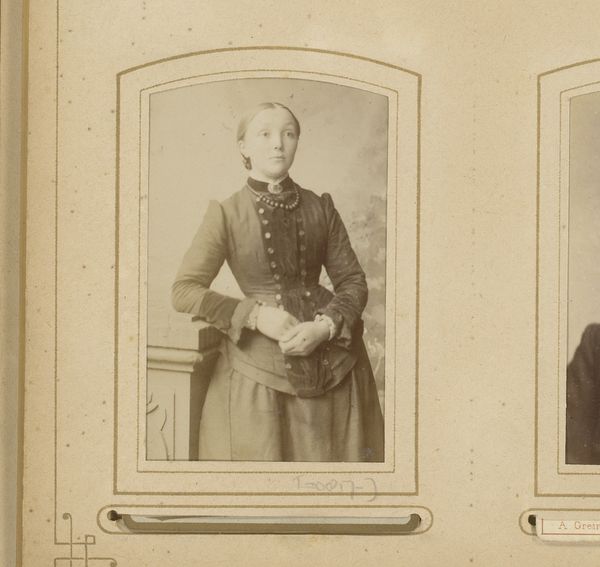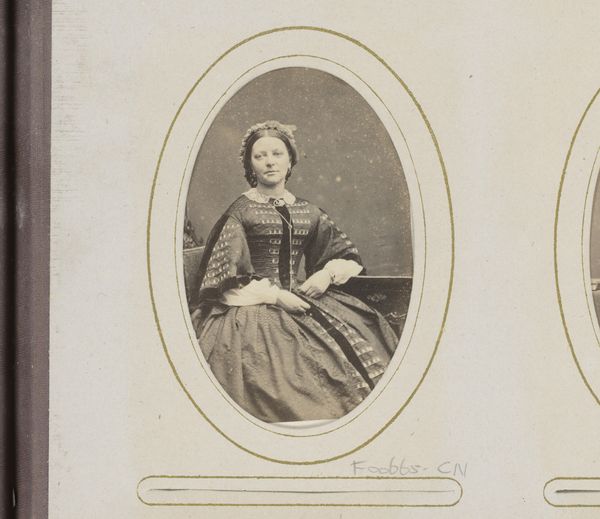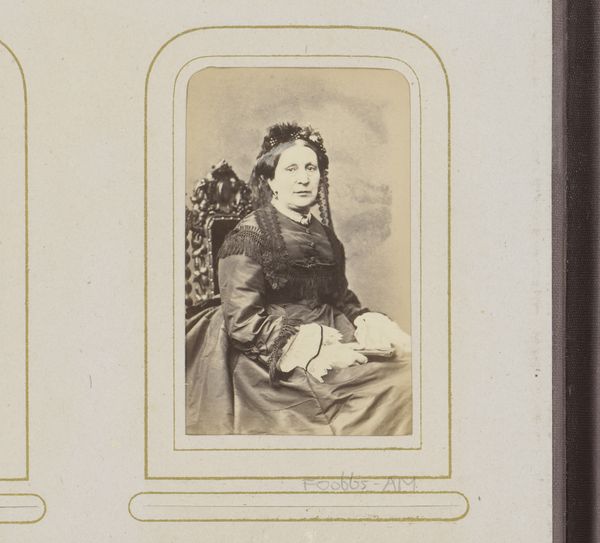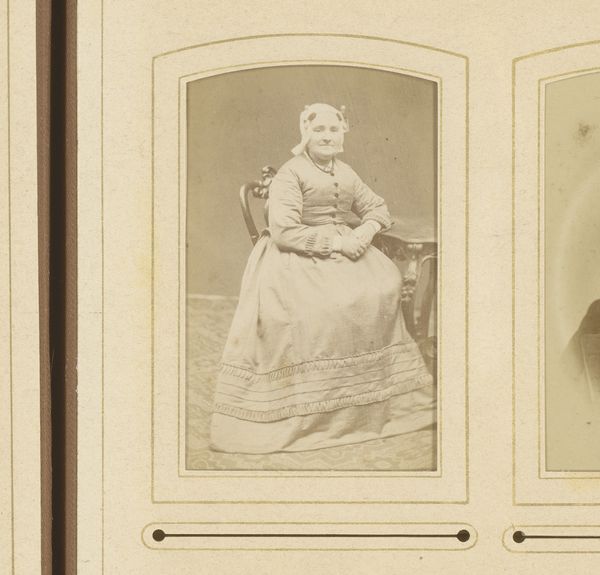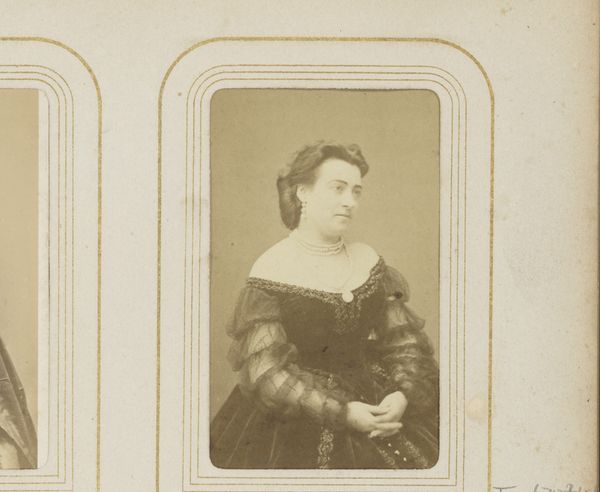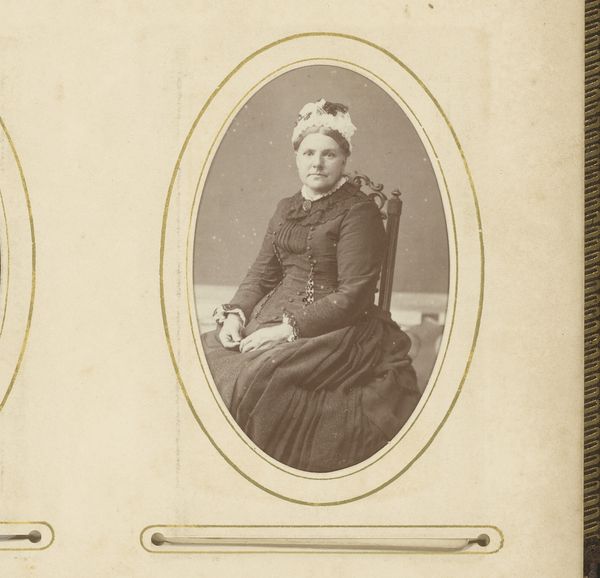
photography, gelatin-silver-print
#
portrait
#
archive photography
#
photography
#
historical photography
#
gelatin-silver-print
#
19th century
Dimensions: height 85 mm, width 51 mm
Copyright: Rijks Museum: Open Domain
Curator: Here we have "Portret van een zittende vrouw met hoofddeksel", which translates to "Portrait of a seated woman with headdress", created by E. Schmid sometime between 1850 and 1900, using the gelatin silver print method. Editor: It's quite striking. A study in texture and constraint, perhaps. The dress looks almost severe. I immediately think about the materials used, and how that influences my reading of the subject. Curator: I agree. Let's consider the broader narrative of women during this era. Restrictions placed on their bodies extended into societal expectations. The headdress and the subdued color palette speak to these notions of propriety. Editor: Precisely! Gelatin silver printing, a refined process for its time, enabled mass production. This portrait would have likely been one of many, destined for family albums, perhaps even sold as a commodity. There is this tension: mass production, yet simultaneously this attempt at conveying individuality. Curator: Good point. And note the details--the lace at the collar, the ribbon, and even the visible rings suggest a certain degree of status and, I'd argue, perhaps aspiration. It invites us to consider class and identity intersectionally. How would someone from a marginalized background be perceived versus this presentation? Editor: The crispness achieved by the gelatin silver print amplifies these details too. Consider the labor involved in her clothing and accessories! Somebody meticulously crafted that lace, wove that fabric. It hints at a complex web of labor. Curator: This piece challenges us to unpack what visual signifiers are at play when representing women. This "sitting woman" might represent all women of that era. Her portrait has become a cultural artifact loaded with meaning. Editor: Absolutely. Reflecting on it now, I appreciate how it invites dialogue on the material realities of representation, the silent labor woven into the very fabric of the image. Curator: For me, this deepens how photographs act as a point of intersection for individual identity, artistic expression and socio-political context.
Comments
No comments
Be the first to comment and join the conversation on the ultimate creative platform.
